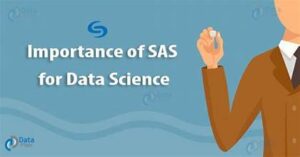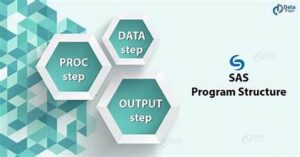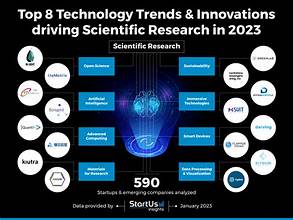
In 2024, SAS programming continues to be a cornerstone in the realm of data science, driving significant innovations and advancements. SAS (Statistical Analysis System) has evolved to address the growing complexities of data analysis and machine learning, making it a crucial tool for professionals aiming to harness data-driven insights. This article explores the impact of SAS programming on data science innovations this year, highlighting its role in enhancing data analytics, machine learning, and business intelligence.
1. Enhanced Data Analytics Capabilities
One of the most notable impacts of SAS programming in 2024 is its advanced data analytics capabilities. SAS has introduced several new features and improvements that allow data scientists to handle larger datasets more efficiently and perform more sophisticated analyses.
- In-Memory Processing: SAS has enhanced its in-memory processing capabilities, enabling faster data access and analysis. This improvement is particularly beneficial for real-time data analytics, where quick insights are crucial for decision-making.
- Integration with Big Data Technologies: SAS has improved its integration with big data platforms such as Hadoop and Spark. This allows users to analyze massive datasets more effectively and derive insights that were previously unattainable with traditional data processing methods.
- Advanced Statistical Procedures: SAS continues to expand its library of statistical procedures, offering more robust tools for hypothesis testing, regression analysis, and time series forecasting. These advancements help data scientists generate more accurate and reliable results.
2. Innovations in Machine Learning
Machine learning is at the forefront of data science innovations, and SAS programming is playing a pivotal role in this field. SAS has introduced several features that enhance machine learning capabilities, making it easier for data scientists to build, deploy, and manage machine learning models.
- AutoML Integration: SAS now offers AutoML (Automated Machine Learning) functionalities, which automate the process of model selection, training, and tuning. This reduces the time and expertise required to develop machine learning models, allowing data scientists to focus on interpreting results and making strategic decisions.
- Enhanced Model Interpretability: SAS has made strides in improving model interpretability, providing tools that help users understand the factors driving model predictions. This is crucial for building trust in machine learning models and ensuring they align with business objectives.
- Support for Deep Learning: The integration of deep learning frameworks into SAS allows data scientists to develop and deploy complex neural networks for tasks such as image recognition, natural language processing, and predictive analytics.
3. Advancements in Business Intelligence
SAS programming also significantly impacts business intelligence (BI), helping organizations transform raw data into actionable insights. The latest advancements in SAS BI tools offer enhanced data visualization, reporting, and dashboard capabilities.
- Interactive Dashboards: SAS has introduced more interactive and customizable dashboards, enabling users to explore data dynamically and create visualizations that are tailored to specific business needs.
- Natural Language Processing (NLP): The integration of NLP into SAS BI tools allows users to query data using natural language, making it easier for non-technical stakeholders to access and understand complex data insights.
- Real-Time Reporting: SAS now supports real-time reporting, allowing businesses to monitor key metrics and performance indicators as they happen. This feature is essential for timely decision-making and agile business operations.
4. Improved Data Governance and Security
In 2024, data governance and security are more critical than ever, and SAS programming addresses these concerns with advanced features and best practices.
- Data Quality Management: SAS provides robust tools for data quality management, ensuring that data used for analysis is accurate, consistent, and reliable. This is crucial for making informed decisions and maintaining data integrity.
- Enhanced Security Features: SAS has implemented enhanced security features to protect sensitive data and comply with regulatory requirements. This includes advanced encryption, access controls, and audit trails to safeguard data against unauthorized access and breaches.
- Compliance with Data Regulations: SAS tools are designed to help organizations comply with data protection regulations such as GDPR and CCPA. This includes features for data anonymization, consent management, and data subject access requests.
5. Collaboration and Integration
Collaboration and integration are key aspects of modern data science workflows, and SAS programming supports these needs through various features and integrations.
- Integration with Cloud Platforms: SAS has expanded its integration capabilities with major cloud platforms such as AWS, Azure, and Google Cloud. This enables seamless data transfer, model deployment, and scalability in cloud environments.
- Collaborative Data Science Workspaces: SAS provides collaborative workspaces that facilitate teamwork among data scientists, analysts, and business stakeholders. These workspaces support version control, shared projects, and collaborative model development.
- APIs and Integration Tools: SAS offers APIs and integration tools that allow users to connect SAS with other software applications and data sources. This enhances the flexibility and interoperability of SAS in diverse data ecosystems.
Conclusion
In summary, SAS programming continues to make a significant impact on data science innovations in 2024. Its advancements in data analytics, machine learning, business intelligence, data governance, and collaboration are transforming how organizations leverage data to drive insights and decision-making. As data science evolves, SAS remains a vital tool, empowering professionals to navigate the complexities of data and unlock new opportunities for growth and innovation.


